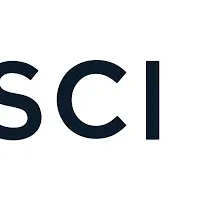
Analyzing Economic Risks Under the 2nd Trump Administration: A Comprehensive Outlook
Economic Outlook: The 2nd Trump Administration
The return of Donald Trump to the presidency has reignited debates about the economic strategies and repercussions of his administration's policies. According to a recent report from Beacon Economics, the incoming administration must confront significant economic challenges that may arise not just from direct actions, but from inaction on pressing issues.
Deficit, Asset Bubble, and Economic Growth
Beacon Economics outlines a critical period ahead for the U.S. economy. While Trump’s administration could initially boost economic growth due to proposed tax cuts and reduced regulations, these benefits come with the potential for increased deficits and an overheated economy. Christopher Thornberg, the founding partner of Beacon Economics, asserts that addressing these fundamental economic problems should top the list of priorities for any new administration. He remarks, “Clearly, dealing with the nation’s deficit and growing asset bubble should be a central focus of any new administration—and just as clearly, they won’t be.” This sentiment reflects a broader concern that both the Trump and Biden administrations have neglected to address these looming issues.
Trade Policies and Global Supply Chains
During the campaign, Trump hinted at implementing tariffs as high as 25% across various industries, a move that could unravel established global supply chains. However, experts believe that Trump's close advisors may guide him away from such drastic measures. Thornberg comments, “A 25% across-the-board tariff would almost certainly set off a damaging trade war.” Influential figures in Trump's circle, including prominent business leaders like Elon Musk, are expected to temper some of the more aggressive tariff proposals due to the potential for serious disruptions in their operations.
Current Economic Landscape
As of early 2025, the economic landscape appears relatively stable, with U.S. real GDP averaging a robust growth of 3% throughout the latter part of 2024. This trend has been bolstered largely by increases in household earnings, which have outpaced consumer price growth over the past five years. To be specific, hourly wages have grown at an annual rate of approximately 4.8%, compared to a consumer price increase of 3.7%. Such trends paint a picture of resilience, but also mask underlying vulnerabilities that might emerge if corrective actions are not taken.
Looking Ahead
The Beacon Economics report serves as a critical reminder that while short-term policies may fuel economic growth, the long-term consequences of neglecting the national deficit and asset bubbles could pose greater risks. As the Trump administration prepares to take office, the decisions made in the coming months will undoubtedly shape America's economic future. Addressing issues of sustainability and economic resilience will be essential in mitigating potential pitfalls.
Conclusion
In summary, the 2nd Trump Administration is poised to reinvigorate discussions surrounding U.S. economic policy, and the forecast from Beacon Economics underscores the need for vigilant oversight and proactive measures. Moving forward, it will be crucial for policymakers to not only prioritize immediate growth strategies but to also consider the long-term health of the U.S. economy as they navigate the complexities of both domestic and global economic landscapes.
Topics Financial Services & Investing)










【About Using Articles】
You can freely use the title and article content by linking to the page where the article is posted.
※ Images cannot be used.
【About Links】
Links are free to use.